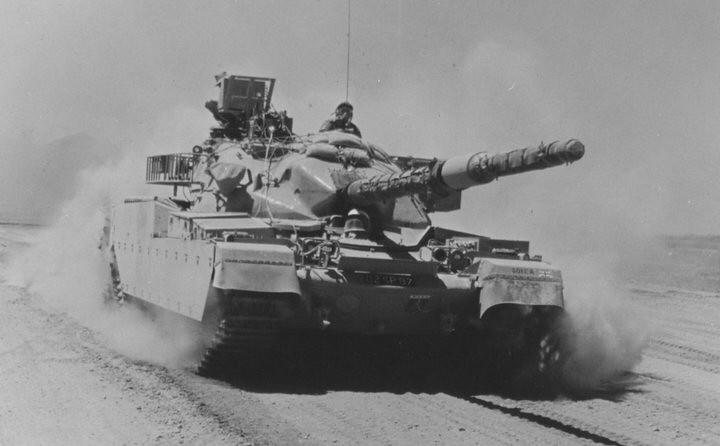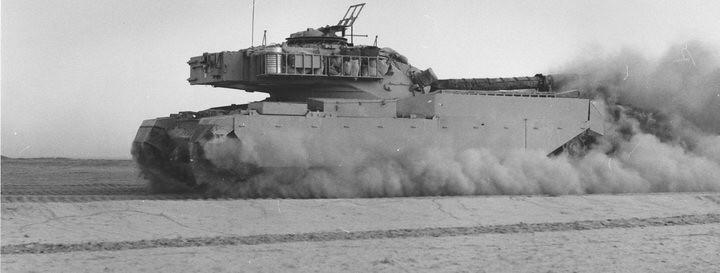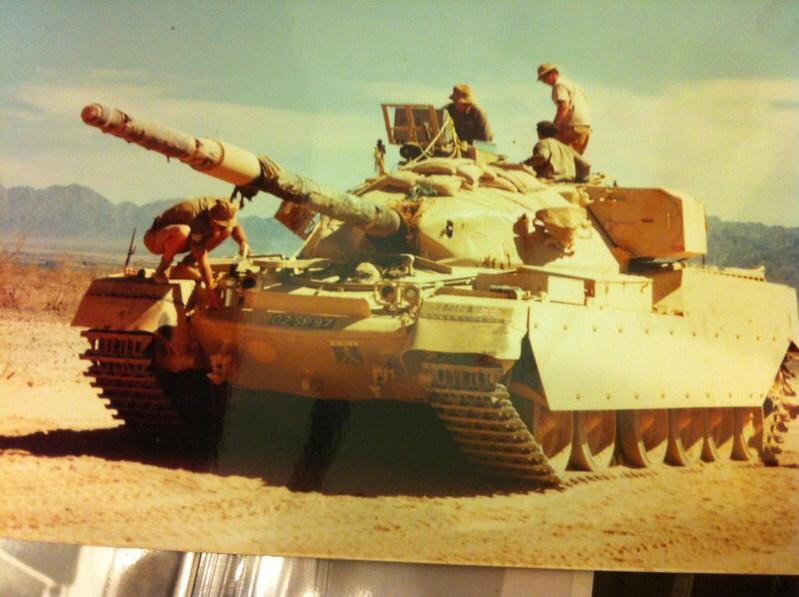- Yes
- No
Summary
The Chieftain Mk 4 in game would act as a cosmetically altered and functionally superior Chieftain Mk 3, featuring improved horsepower, a removed ranging machine gun, laser rangefinder, and superior zoom on the gunners sight.
History
In February of 1964 the Israeli Defense Force determined that it would need to have domestic production of tanks of its own. To that date the Israelis were dependent on outside sources. In 1948 it was Czechoslovakia, in the 50’s it was the French. But by the mid 60’s French attitudes toward the Israelis were shifting, and it was beginning to look like they would not be able to be relied upon for future weapon acquisition. The original goal was to select a vehicle designed by a outside state and to purchase unassembled tanks in kits to be assembled in Israel, with Israel taking over parts creation and eventually manufacturing without assistance.
The question was what tank it would be. In 1965 the choices available were the Leopard 1, AMX-30, Chieftain, and Patton tanks. The Germans and Americans were not amiable to having foreign production of their vehicles, and the AMX-30 was being designed with maneuverability over armor in mind. The Chieftain was a much better fit for what the Israelis were looking for. And better still, they were perfectly fine with the Israelis setting up their own production. In fact, this was a bit fortuitous for the British. The Israelis could test the vehicle and give feedback on modifications required to harden it to desert usage. To this end, at the start of 1967 a pair of Chieftain Mk 2’s were provided to the IDF for trials.

Chieftain Mk 2 in Israel. Can tell it is a Mk 2 based on the commanders hatch style and the large circular headlights. Fellow on the right is General Israel Tal, a leading figure in Israeli Armor doctrine development and ‘father’ of the Merkava.
Something else happened in 1967, and that was the 6-day war. Allegedly, the British called up the Israelis and asked them to move the Chieftains from the Egyptian border so they would not be seen as working with the IDF, and the Israelis responded that they had moved the borders away from the Chieftains. Also, allegedly the Chieftains were used in combat (after all, they were functioning tanks and what better trial than a trial by fire). No real evidence exists for either of these.
But in late 1968, the Israelis decided to put their pens to paper and sign on the dotted line and buy some Chieftains. In 1969 they even sent a group to the Factorys at Royal Ordinance in Leeds and at Vickers- Armstrong to learn. It looked like the first domestic Israeli tank was going to be a Chieftain. With the Mark 3 entering production in that year, the Chieftain Mk 4 was going to be the one for the Israelis, modified to meet their operational requirements.
Diplomatically though, trouble was brewing. The Arab states learned of the deal and began to apply diplomatic pressure, and they had oil and the Israelis didn’t. Atop that, the British got cold feet about the regional balance of power if the Israelis got a minimum of 700 advanced MBT’s. They believed that the land seized during the 1967 war should be returned in order to further peace in the region and if the Israeli position was too strong they would feel no need to do so. Whatever the ultimate reason, just before the end of the year the British nixed the deal. The Israelis turned in their two Chieftains that they had and decided that they were going to have to make their new tank on their own from the ground up. From this, the Merkava would emerge.
However, Chieftain Mk. 4 wasn’t quite cancelled. 2 were made in 1970 and were tested in Arizona in 1971 to determine if the Israeli proposed changes to the engine cleaning and cooling systems would allow the tank to be suitable for desert conditions.
While the Israelis never got them, War Thunder could allow us to entertain a ‘What-if’.
In-Game Performance
The Chieftain Mk. 4 in real life was a product improved version of the Chieftain Mk.3, but ingame would function essentially as a Chieftain. Mk 5 with a laser rangefinder and greater zoom on the optics.It would be quicker to mention the differences that would affect gameplay of the Chieftain Mk. 4 than to relist all the similarities between the two.
First, the engine. Chieftain Mk. 4 not only included modifications for desert conditions, but also a more powerful engine than the Chieftain Mk. 3. As opposed to the L60 No.4 Mk.4A engine which produced 650 HP, the Chieftain Mk. 4 used an engine referred to at the time as L60 Fleetfoot developing 750 HP. This engine would become the L60 Mk. 8A. With a loaded weight of 54.5 tons the Chieftain Mk. 4 has much improved HP to Weight over the Mk. 3 (13.76 compared to 12.13) and is comparable to the Mk.5 (13.82). The transmission was also changed but specific details on what gear ratios were are not currently available. It is reasonable to assume that they are similar or equal to those of the Mk. 5.
The second major gameplay difference would be the addition of the laser rangefinder. The .50 cal ranging machine gun appears to have been removed as the coaxial GPMG was moved to its original position, a new cover was installed on the original aperture, and new covers and associated systems had to be installed. The removal of the ranging machine gun was offset by the addition of the laser rangefinder, with all optics having upgraded graticules for the laser, the gunners sight being modified for the laser type 1 sight and the vehicle receiving the type 2 mounting for the laser. All unmodified fire control systems are specified to be the Mk 3/2 pattern (the first Chieftain variant to include the prototype laser rangefinder which predated the Tank Laser Sight (TLS)). As a side note this prototype gun sight is stated to have a x10 magnification.
Vehicle Characteristics
Below are both the characteristics for the Chieftain Mk 3. from the Chieftian handbook, and the specifications for how the Chieftain Mk 4. was modified from that.
Sources
“Chieftain Main Battle Tank 1965-2003” by Simon Dunstan
“Chieftain Main Battle Tank: Development and Active Service from Prototype to Mk 11.” by Robert Griffin
Below is a link to a very extensive coverage of the British and Israeli relations in the late 60’s and how the Chieftain was affected.
core.ac.uk
151161087.pdf
424.29 KB
A/26/MANUALS/4287 - User Handbook for Tank, Combat, 120-mm Gun, Chieftain, Mk.1 And 2, 3 - 1966
Report 71010 - Trials Specifications for Hot/Dry Trials of Chieftain MBT Mk.4 Prototypes (Exercise Dryfoot) - April 1971
![]() discovery.nationalarchives.gov.uk
discovery.nationalarchives.gov.uk
Instructions for Exercise Dryfoot, May to September 1971 | The National Archives
The official archive of the UK government. Our vision is to lead and transform information management, guarantee the survival of today’s information for tomorrow and bring history to life for everyone.











